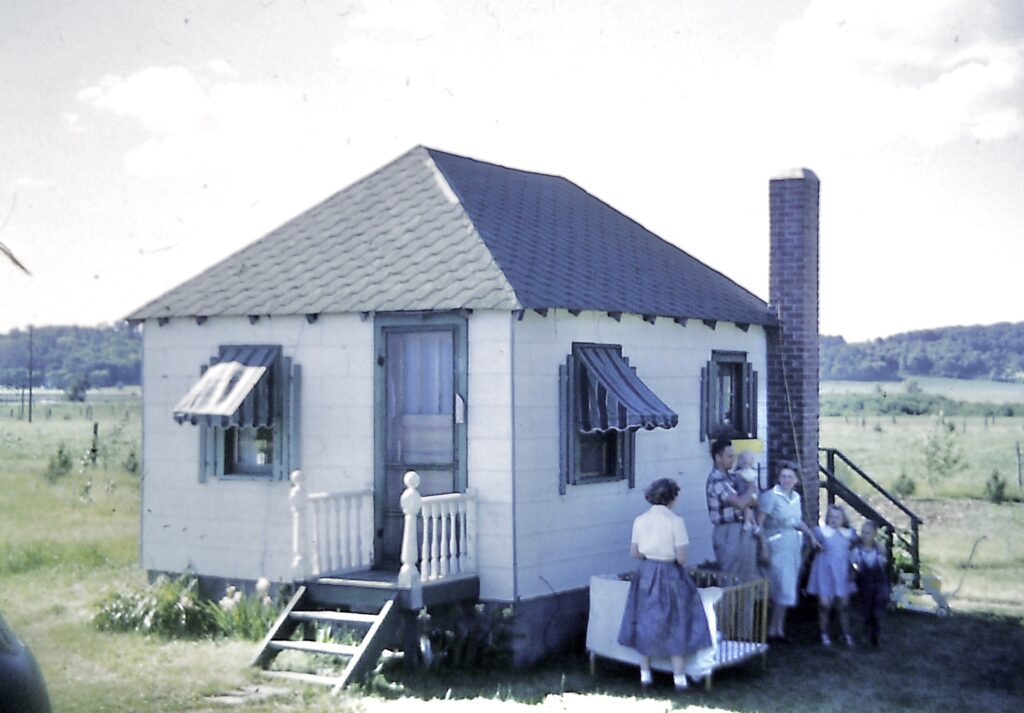Our Little House On The Prairie

It’s suddenly August. As kids, we knew that the flip of the calendar to that month meant summer’s end was coming.
July was always safe, knowing that we had at least a month left before school started. But after Independence Day, things slowly changed. By then, our summer routine was well established. We lived by the sun, getting up and going to bed on its schedule.
But as July progressed, the burn of summer started to wear on us. We had checked off most of the easy things on our summer fun list. We lacked the energy to pursue serious projects such as building a tree house in the woods behind our house on East Seventh Street.
Our reprieve was to go to our family cabin in Strum, Wisconsin on most weekends and for about four weeks in late July after my father Juneau finished teaching summer driver ed.
Around here, “cabin” usually implies a vacation dwelling north of your main home, usually in a pine forest on or near a fishing lake. But “north” is a relative term. For example, numerous cabins on the Mississippi River are owned by Iowa residents so they “go north” to their cabins. Our “Little House,” as we called it, was about two hours almost straight east of Red Wing and is technically south by about a half mile.
Strum is not the first place people would look to build a cabin although there are some in that area, mostly used for hunting. Strum does have a small lake (Strum Lake), formed by a dam on the Buffalo River. But it’s too small for serious boating. The main incentive for my dad to build a cabin there was that his young family needed a place to stay when visiting relatives in this, his home town. My mother Bea was from nearby Blair, but most of her relatives were also in Strum. They met at a church social there.
Dad built the cabin in the late 1940s on a half acre of his farm home, about a mile from town on what was then known as Prairie Road. Having little money as a young teacher, he bought a small one-car garage and moved it to his new property. That garage became a one-bedroom cabin, about the size and look of the sod homes you see in photos of early settlers, complete with no trees. It was rustic.
The cabin was a good half-mile from the Buffalo River but the land must have been part of the river basin eons ago since it was sandy soil. Not good for farming but a haven for chipmunks, sand burrs and some type of tumbleweed. The road itself was sand until the 1950s. Locally, the river is still called the Beef River. There’s some history on how it officially became the Buffalo River.
We stayed at the cabin any season of the year. Often it was the relatives that visited us there. The cabin had an indoor hand pump for water from a shallow sand point. The water was always cold and thirst-quenching, and we all drank from a dented aluminum dipper.
The outhouse was down a well-worn path and hidden by pine trees. Using it at 20 below is something you don’t forget. Kerosene lamps provided light before electricity. Heat was provided by a fuel-oil burner in the sand-floor basement. Water was heated on propane burners. Natural gas came later. We washed up and brushed our teeth on the back porch, spitting over the railing. It was great fun. All wash water went over the railing, too.
One of Dad’s greatest achievements was the addition to the cabin, doubling its size. The cabin was now “modern rustic.” He supplemented that space with a succession of small camping trailers over the years. We kids slept there in warm weather, waking to bowls of cereal with fresh cream from a relative’s dairy farm just up the road.
Some days were really hot on the sand prairie so we went “for a dip” in the Secret Place, a not-so-secret spot on the Buffalo River. It was shallow but that spring-fed water was refreshingly cold. It didn’t take long to cool off and clean up with shampoo and soap.
There were many highlights over the years. Strum hosted a “free show” each Friday night in an area behind the root beer stand. I think the screen was a sheet hung between two poles. Strum Steam Engine Days put Strum on the map for many years. It centered around demonstrations of grain threshing in the days before modern combines. It was hugely popular while those that remembered those days were still alive.
Over the years, pine trees planted for privacy on the perimeter of the lot grew large. New homes were encroaching. One was built right next to our outhouse.
Dad cherished his time sitting under the maple tree in the front yard, reading and waving at cars as they drove by. Mom said she was just going to bury him there. After selling his farm, Grandpa Julius spent several of his last years living in the cabin. He is likely the one who planted all the pine trees.
The cabin was sold and and modernized after Dad died. My brother Dave and nephew Brian have cabins in the area so a family presence remains.
And so will the memories of our Little House on the Prairie.